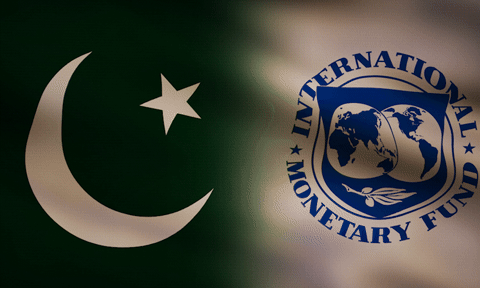EDITORIAL: Pakistan Bureau of Statistics (PBS) data on the July Consumer Price Index (CPI) of 24.9 percent year-on-year compared to 21.3 percent in the previous month and 8.4 percent in July 2021 comes as no surprise. Particularly hard hit are the salaried class people employed in the private sector, given that the rise in inflation has shrunk their disposable income, and which is further reduced due to the Finance Bill 2022 that envisages 2.5 percent tax on those earning from 50,000 to one lakh rupees and 12.5 percent from those earning one to 2 lakh rupees per month.
The public sector employees have, at the taxpayers’ expense, been given a 15 percent raise in income which falls short of the rate of inflation by nearly 10 percent. And hard hit would be the pensioners who have been extended a 5 percent raise in spite of the fact that study after study reveals that pension raise is much less inflationary than the rise in salaries.
Core inflation rose by 1.5 percentage points in July to 12 percent against 11.5 percent in June — a rise that presages a rise in the discount rate which will have negative repercussions on input costs of large-scale manufacturing sector with consequences for output and employment.
While the scheduled date of the next Monetary Policy Committee (MPC) meeting is on 22 August, there is the distinct possibility that an earlier meeting be called as noted in the Monetary Policy Statement issued on 7 April 2022 during the tenure of the then Governor, Dr Reza Baqir, notably that the “MPC was prepared to meet earlier than the next scheduled MPC meeting in late April, if necessary, to take any needed timely and calibrated action to safeguard external and price stability.”
Thus a further rise in the discount rate is almost certainly on the cards given that when the MPC last met on 7 July the discount rate was raised by 2.25 percent with core inflation rising from 9.7 percent in May to 11.5 percent in June, and CPI jumping from 13.8 in May to 21.3 in June — data reflecting two predominant factors: (i) the International Monetary Fund conditions were met in June which reflects the incumbent government dragging its feet from 10 April when the vote of no-confidence was successfully passed to end May; and (ii) what should be of serious concern irrespective of pro-investment fiscal policies is the massive rise in the Wholesale Price Index — from 17.3 percent in July 2021 to 38.5 percent in July 2022 — a rate rise reflecting the rise in utility prices.
SBP, however, rightly notes on its website that “currently it does not have an explicit target for any nominal variable (such as M2 growth) to achieve the ultimate objective of price stability. Rather, SBP has been seeking to control inflation by influencing aggregate demand relative to productive capacity through adjustments in the short-term interest rates.”
Aggregate demand is being checked by raising the discount rate, and failing to raise it by as much as is required to achieve positive real rates due to political considerations, the rupee is being allowed to depreciate. It is indeed a sad state of affairs as economic policies designed to check inflation in Western countries are having a particular adverse impact in Pakistan, particularly on the middle to lower income levels.
In this milieu Finance Minister Miftah Ismail’s decision to end fixed tax on traders, on a tweet from Senior Vice President Maryam Nawaz Sharif is inexplicable because this would imply lower FBR collections (budgeted at no more than 9 percent of GDP against the revised estimates of 8.96 percent in 2021-22) which no doubt the Fund would insist be covered by raising the shortfall from some other levy which, given Ismail’s reliance on indirect taxes whose incidence is greater than on the rich, would imply more hardships for the poorer section of society. This newspaper would urge the government to think out-of-the-box solutions rather than complete adherence to the IMF conditions and one way out would be to slash current expenditure and improve governance in the energy sector and FBR.
Copyright Business Recorder, 2022

























Comments
Comments are closed.